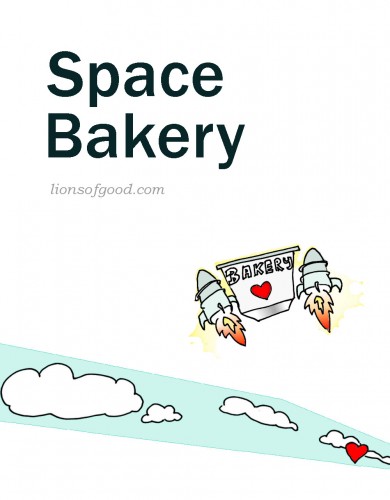Sometimes, kids can teach us more about life than we realize.
In the video above, Zia Terry (a 10-year old girl from Park City, Utah) attempts a K40 ski jump for the first time. Turn up your audio and listen closely (there’s a surprise lesson here) as she overcomes her nerves at the top of the jump, with the help of her ski instructor:
Zia: I’ll do fine. I’ll do it! Mmmm. Here. Goes. Something… I guess. O… kay. You can do this. I’m gonna. I’m gonna jump. Whoops! My ski’s slippin’ off!
Instructor: Remember, no snow plow, ok?
Zia: No Snow plows!
Instructor: Keep it straight and you’ll be fine.
Zia: Ok! Straight. Do you go faster on the end run?
Instructor: A little bit.
Zia: A little bit?
Instructor: Yeah.
Zia: Is it any steeper, do you think? Not much?
Instructor: Same steepness. Just longer.
Zia: Just longer. Just longer. (More assured:) Just a bigger 20, that’s all.
Instructor: That’s all.
Zia: A bigger 20. I got it. [Breathing heavily, as though trembling] mmmh! Mmmmh!
Zia’s mom: You’ll do fine.
Zia (voice shaking): ok. Here… I… Go. [takes off]
[YELLING] Whoa! YEAH!!!!!!!
(at bottom of run) YEAH!!!!!!!!
(voice now relaxed and excited:) Just the suspense at the top the first time freaks you out! That’s the only thing! It’s SO FUN! 60 seems like nothin’ now!!! WHOOOOO!!!!!
The truth behind this video is that Zia actually had the skills she needed for the jump — she had mastered smaller K20 jumps and her instructor and mom were confident enough to advance her to the larger K20 jump we see her doing in the video.
But technical mastery wasn’t enough — she wasn’t quite ready mentally. She needed to negotiate her fears and reason things out, before she was able to lean forward and let go.
Most importantly, she needed a little reassurance from her instructor. He didn’t say much, but what he said was crucial. How crucial? Try to imagine the experience again, except this time without her instructor there. Imagine if she were all alone at the top, looking down the slope with no one to answer her questions.
It’d be scary, don’t you think?
And yet, this is the scary place you leave your prospects who are not yet ready: alone to fend for themselves; alone with their questions and doubts.
Most businesses focus only on the people who are “ready to buy right now”, but ignore those who are “interested but not ready”.
Big mistake… especially because the number of people who are “interested, but not ready” is far greater than the people who are ready.
And it’s not that the people who are not ready to buy will never buy. They’re just not ready to buy now. By ignoring them, they’ll probably buy from someone else later… from someone who serves them better and cares enough to help them the rest of the way.
Stay in touch with everyone who raises their hand, but not quite ready yet to take the next step. Help them the rest of the way.
This is the important (but often foolishly ignored) principle of Follow-up.
Any advertising or marketing campaign without a follow-up system baked into it is as silly as trying to win a Basketball game with a team that only shoots from half court (and never passes or dribbles)… Or trying to win a Football game with a team that never advances the ball (and only kicks to the goal from 50 yards away)… Or trying to win at baseball by only hitting home runs… Or trying to win at Golf with “get hole-in-ones” as your only game plan. You get the idea.
Unless you’re selling candy, there’s often a scary void between where someone is when they discover they have a problem and where they need to be to make a confident decision to buy your solution. If you ask them to buy right away, it’s too much, too fast. You’re asking them to leap too far across the gorge. You’re yelling at a child for not balancing on his bike on his first try.
There is a gap, so you need to build a bridge – from them to you. You will build a safe bridge – one that isn’t scary or intimidating, and one that’s easy to cross – starting from where they are. You will make a series of fair exchanges, earning their trust in you with each step. You will reward them for each step they take… until you can reach over, shake their hand and give them a hug.

Always follow-up
Always follow-up.
Remember, there are only 4 options for someone who doesn’t say ‘yes’ immediately:
- Do nothing
- Delay
- Choose a similar solution elsewhere
- Choose a different solution
The common factor missing in each of those 4 options is Trust. They do not trust that you have the best solution for them right now. It’s your burden to earn their trust.
So, just like how Zia’s instructor was there for her, guide people from their lonely places of doubt and uncertainty and give them the trust and confidence they need to take the next step — toward a better life.



Add your comment: